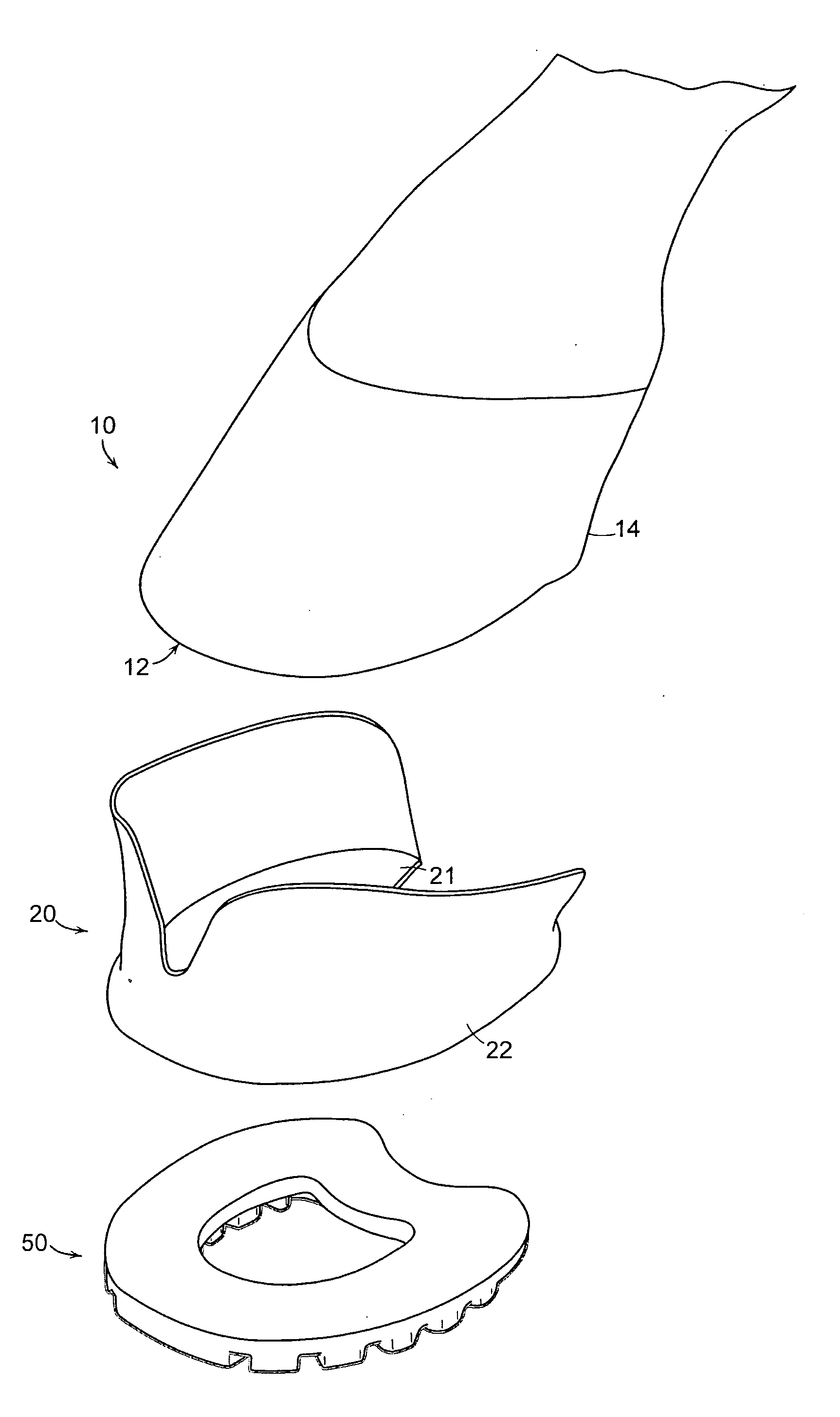Material and method for fabricating a custom made and fitting an animal boot and shoe
a custom-made, shoe-fitting technology, applied in the field of shroud-covered plastic shoe system, can solve the problems of exacerbated problem, difficult to effect with a pre-formed horseshoe, and cut the shoe to shape or use chemicals with undesirable side effects, so as to prevent infection
- Summary
- Abstract
- Description
- Claims
- Application Information
AI Technical Summary
Benefits of technology
Problems solved by technology
Method used
Image
Examples
Embodiment Construction
[0023] In one embodiment, as illustrated in the drawings, the present invention provides a boot for use in shoding a hoofed animal such as a horse. FIG. 1 illustrates a boot 20 which can be wrapped around a horse's hoof 10, to which a shoe 50 can be affixed. As shown, the boot 20 has a base plate 21 with a substantially circumferential wall 22 extending upward therefrom. In the embodiment shown, a v-shaped or triangular opening 25 is provided in the base plate 21. This opening 25 coincides substantially with the frog region of the horse's foot. Preferably, a v-shaped wall opening 26 also is provided to facilitate wrapping of the boot around the hoof by eliminating material that would require folding of the wall.
[0024] The hoof 10 on the foot of a horse comprises a curved covering of horn which protects the front of, and partially encloses, the end of the corresponding digit of the horse. It corresponds generally to a nail on a finger or toe of person. The forward end of the hoof is...
PUM
 Login to View More
Login to View More Abstract
Description
Claims
Application Information
 Login to View More
Login to View More - R&D
- Intellectual Property
- Life Sciences
- Materials
- Tech Scout
- Unparalleled Data Quality
- Higher Quality Content
- 60% Fewer Hallucinations
Browse by: Latest US Patents, China's latest patents, Technical Efficacy Thesaurus, Application Domain, Technology Topic, Popular Technical Reports.
© 2025 PatSnap. All rights reserved.Legal|Privacy policy|Modern Slavery Act Transparency Statement|Sitemap|About US| Contact US: help@patsnap.com



